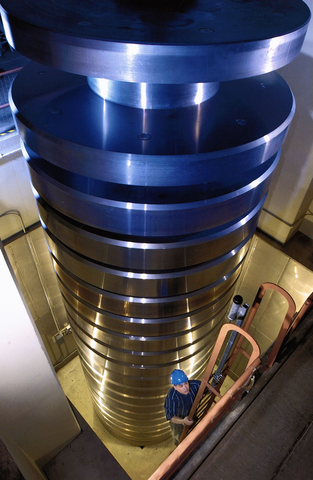
Mechanical engineers at the National Institute of Standards and Technology (NIST) have just finished calibrating several dozen large metal masses, which will be used to build a pair of unique force-producing machines currently being custom-built for the U.S. Air Force. The new Air Force machines will be about three times better than what they have now, though with larger uncertainties than NIST’s primary standards. They will support achieving peak performance of military aircraft that are the most advanced in the world.
When fully assembled, the devices – called deadweight machines – will consist of stacks of cylindrical masses, each between 500 and 8,000 pounds in weight. The deadweight machines will be used to calibrate force measurement devices, equipment that can be used to measure things like the thrust of a rocket engine or the weight of an aircraft before and after fueling.
The two new deadweight machines should improve efficiency and reduce the uncertainty of the Air Force’s force calibrations, said NIST’s Kevin Chesnutwood, who led the mass calibration effort.
“There are similar deadweight machines in the world but, truthfully, not all that many,” Chesnutwood said. “So any time one goes online, it is noteworthy.”
The Air Force’s deadweight devices are manufactured by Morehouse Instrument Company, which designs and builds force measurement tools. NIST’s job was to calibrate and adjust the custom-built masses to a specified target. “NIST can provide the most precise and accurate calibrations available at these capacities,” Chesnutwood said.
Until now, the Air Force would send a few force-measurement devices called load cells (see photo) to NIST every year for calibration using NIST’s array of giant deadweight machines.
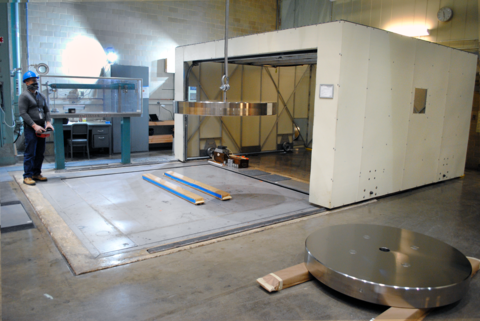
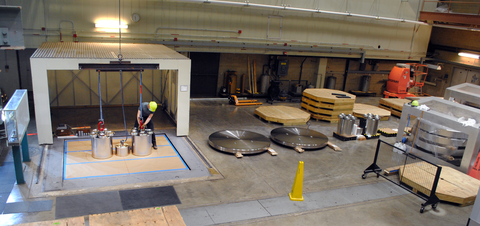
The Air Force would then do what’s called a transfer calibration. This type of calibration used a machine that could compare the forces measured by the NIST-calibrated load cells to the forces measured by the Air Force’s other load cells.
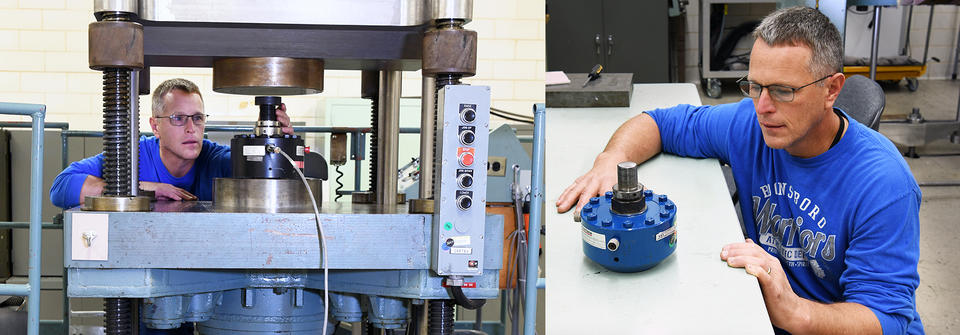
But when fully assembled, each Air Force machine will act as a “primary standard,” meaning it can make a direct measurement of force rather than making a comparison. It will also have very low uncertainties. This means the Air Force will be able to calibrate more of its load cells directly, without the need for comparisons to other load cells, which further reduces uncertainties. It also means that load cells could be calibrated on-site without needing to be sent to NIST every year.
“The Air Force’s requested uncertainty, which is very good – on the order of 0.0010% – still won’t be quite as good as our primary standard here at NIST, but it will be far and away above what they currently have,” Chesnutwood said.
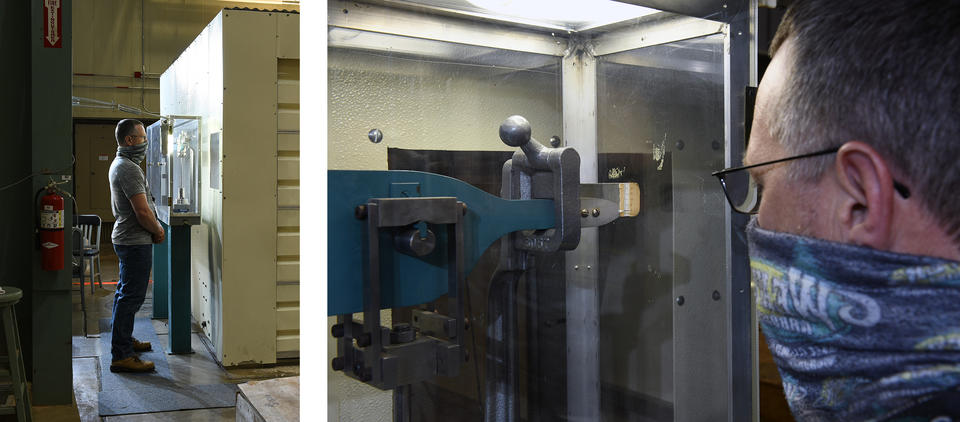

Deadweight machines that are used as primary standards with such low uncertainties are rare, according to Chesnutwood. “They’re usually only found at National Metrology Institutes” – government labs that maintain and disseminate measurement standards – “not at other types of laboratories or institutes.”
The Air Force provided the following statement:
“The Air Force operates the most advanced aircraft in the world. To ensure each aircraft can achieve full performance, it is critical that the Air Force also operates world‐class test and measurement equipment. The new deadweight systems will serve as the cornerstone for all force and large mass measurements in the Air Force for decades to come. The deadweight systems are directly traceable to the weighing and balancing of aircraft, weighing of vehicles, weighing for material handling, jet and rocket engine thrust measurements, landing gear force testing, and space flight testing.
“We anticipate the improved accuracy to be about 3 times better than the system we currently have, which was built in the 1980s. This will allow the Air Force Primary Standards Lab to provide better calibrations with improved accuracy. In turn, Air Force engineers performing R&D and testing will be able to collect more accurate data that is used in the development of new technologies.”
-- Reported and written by Jennifer Lauren Lee
Any mention of commercial products within NIST web pages is for information only; it does not imply recommendation or endorsement by NIST.

